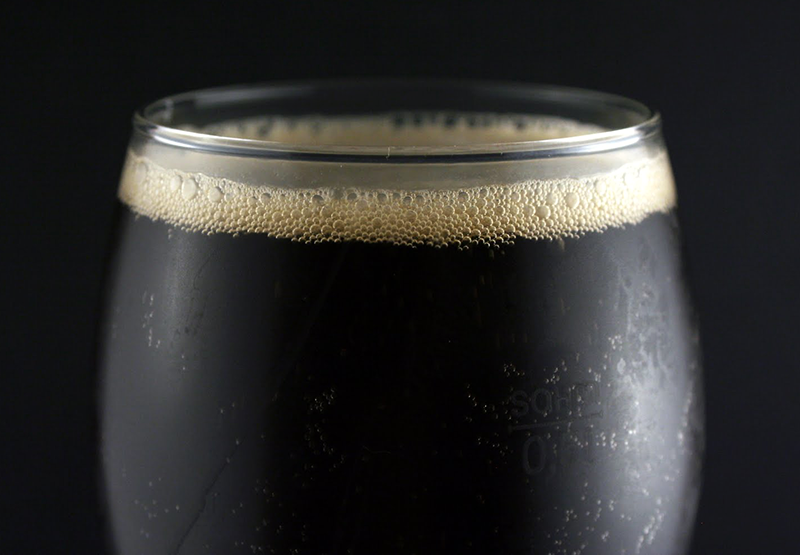 A few months ago I shared beer recipe for a German black lager: schwarzbier. I’ve decided to make this my next batch.
A few months ago I shared beer recipe for a German black lager: schwarzbier. I’ve decided to make this my next batch.
To me, dark lagers represent the best of two worlds. With roasted malt, they offer the depth of flavor of some heavier beers while still being relatively light and smooth – qualities contributed by the lager side of the equation.
As a lager, I find this to be a more challenging style to brew than say, a double IPA. With a relatively low amount of hops, there’s no hiding potential faults behind extreme hop bitterness or flavor. Paying particular attention to yeast pitching rates and fermentation temperatures will be critical towards making this a great beer.
To gear up for my black lager brew day, I’m going to plan my water amendments and prepare a yeast starter.
Water Amendments for a Munich Schwarzbier
To calculate the water amendments for this beer recipe, I’m going to head over to the mash chemistry calculator over at Brewers Friend. First, I’ll input my local water profile.
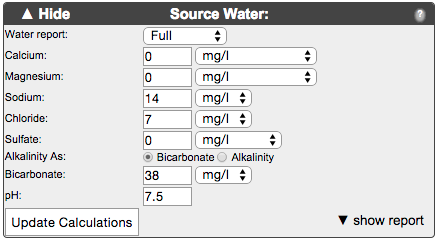
Then I’ll play around with the “Salt Additions” section until the “Actual” numbers for each of the main brewing minerals matches relatively closely to the profile for Munich Dark Lager. It’s not about getting a perfect match so much as getting in the ballpark.
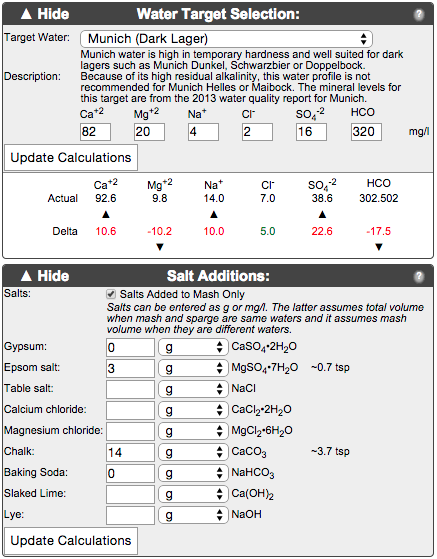
So, I’ll add 14 grams of chalk and 3 gram of Epsom salt, which gets me pretty close to the Munich water profile.
Now I can get to work on the yeast starter.
Yeast Starter for a Munich Schwarzbier
Of the two, this part is probably more important than the water amendments. Pitching enough yeast to fully ferment the lager is critical to getting a complete fermentation with a minimum of off-flavors. And since lagers require about twice as much yeast as ales, it’s extra important to build a yeast starter.
For this calculation, I’ll use the Brewer’s Friend Yeast Pitch Calculator to make sure my yeast starter has enough cells to do the job.
First, I’ll input the original gravity of the beer, the wort volume, and the number of yeast packs I’m using, and the manufacture date of the yeast. Unfortunately, I’ve been sitting on this yeast for a little while, so the “cells available” count falls well short of the target 386 billion yeast cells need for this beer. Clearly, we need a yeast starter.

Scroll down to the next section to continue. Hit the “Grab from Above” to pull in the info from the previous section. Then, using the defaults, choosing the appropriate growth model and aeration technique. I don’t have a stir plate yet, so I’ve chosen “C. White – Shaking.” This means I’ll give the starter swirl every now and then.
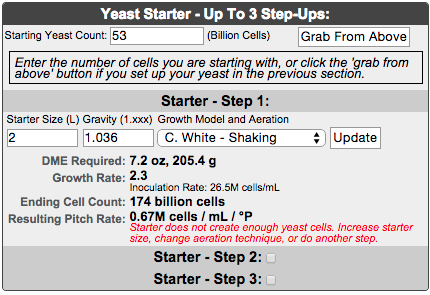
As you can see, the ending yeast cell count is still well short of the yeast count we need. To step up the starter again, we’ll check the box for step 2 and repeat the process.
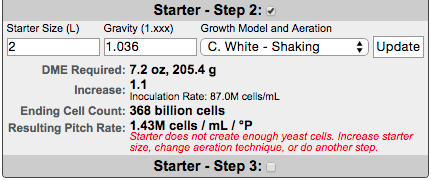
In practice, all that’s required in stepping up a yeast starter is decanting some of the liquid from the starter and then transferring it onto an additional 2L of starter wort. After two steps, the yeast count is still a tiny bit short of the target (368 vs. 369 billion cells), but it’s close enough. On brew day, after the beer is chilled to pitching temperature, the whole starter can go right into the wort. Make sure there’s plenty of headspace in the primary fermenter – this one should get chugging right away!
Check back soon to follow along with brewing this schwarzbier! Cheers!
—————————————————————–
David Ackley is a beer writer, homebrewer, and self-described “craft beer crusader.” He holds a General Certificate in Brewing from the Institute of Brewing and Distilling and is founder of the Local Beer Blog.
